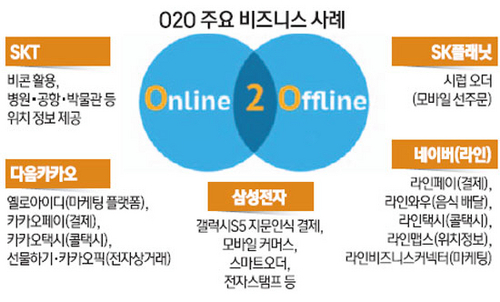최근 이통사들 사이에서는 LTE-U, LAA(Licensed-Assisted Access)라는 키워드가 화두이다.
네트워크 용량 증대를 위해서는 주파수 확보가 필수인데 이 주파수를 매입하려면(즉, 사용 라이센스를 취득하려면) 날이면 날마다 기회가 있는 것도 아니고 천문학적인 비용이 들어간다.
이미 대부분의 국가에서는 대부분의 사용가능한 이동통신용 주파수가 경매로 할당되어 사용중이라 "주파수"라는 눈에 보이지 않는 자원을 얻기위해 기존의 다른 용도로 쓰이던 대역(예를 들면 TV 방송대역)을 refarming하여 이동통신용으로 재배치하거나 아직 기술의 부재와 도달거리의 한계로 사용되지 못하고 있는 고주파 대역(3.5GHz)이상의 대역에 눈을 돌리기 시작했다.
여기에 추가로, WiFi나 Blooth가 사용하고있는 2.4GHz, 5GHz대역은 누구나 사용할 권리가 있는 비면허(licensed)대역이고 LTE기술도 이와 동등하게 사용가능하다는 주장이 나오기 시작했다.
'14년 중순경 부터 San Diego의 모뎀칩 업체인 Qualcomm은 LTE-U라는 이름으로 기술의 표준화를 주도하면서 통신사들에게 약을 팔러 다니기 시작했다. 자사가 기술을 확보하고 있던 LTE 모뎀이 있었고, 여기에 추가로 비면허 대역까지 지원한다면 이것을 반기는 통신사들의 지지로 시장 지배력이 더 커질 것이라고 기대했을 것이다.
WiFi망을 운영하는 Comcast등의 케이블 서비스 업체와 Broadcom등의 WiFi칩업체 등 WiFi기술을 옹호하는 업체들은 기분이 나쁘기 시작했다. 일부 WiFi사용자들도 기분이 상했을 지도 모르겠다. WiFi를 공짜로 잘쓰고있었는데 누군가와 같이써야 될 뿐만아니라 이 새로 굴러들어온 놈이 깡패인지 어떤놈인지 알수가 없었던 것이였다.
지금 미국 규제당국(FCC)와 WiFi Alliance는 LTE-U(또는 LAA)가 기존 WiFi 성능을 저해하지 않는 선에서 동작을 해줄지 표준화와 테스트 결과에 대해 촉각을 곤두 세우고 있다.
LTE-U나 LAA는 비면허 대역을 단독으로 사용하지 않는다. LTE면허 대역과 Carrier Aggregation을 통해 시그널링은 Primary CC(carrier component)인 통신사 면허 대역을 통해 전달되고 큰 부하가 되는 사용자 데이터를 비면허를 통해 offloading한다.
<3GPP 36.899>
Licensed spectrum needs for LAA
The amount of data traffic carried over cellular networks is expected to increase for many years to come. The number of users/devices is increasing and each user/device accesses an increasing number and variety of services, e.g. video delivery. This requires not only high capacity in the network, but also provisioning very high data rates to meet customers’ expectations on interactivity and responsiveness. More spectrum is therefore needed for cellular operators to meet the increasing demand. Considering user expectations of high data rates along with seamless mobility, it is important that more spectrum be made available for deploying macro cells as well as small cells for cellular systems.
The preferred type of spectrum to efficiently serve users is licensed spectrum. Licensed spectrum can deliver predictable high-quality services with the highest spectral efficiency. In addition, in order to deliver predictable services, mobile operators perform heavy network investments, through careful planning and deployment of high-quality network equipment and devices. The justifications for such extensive capital investments require the reliability and operational assurance enabled by licensed spectrum. It is therefore essential that the regulatory community keeps focusing on identifying and allocating new licensed spectrum that can be utilized specifically for mobile communications.
Striving to meet the market demands, there has been increasing interest from operators in deploying some complementary access utilizing unlicensed spectrum to meet the traffic growth. This is exemplified by the large number of operator-deployed Wi-Fi networks and the 3GPP standardization of LTE/WLAN interworking solutions. This interest indicates that unlicensed spectrum, when present, can be an effective complement to licensed spectrum for cellular operators to help addressing the traffic explosion in some scenarios, such as hotspot areas. LAA offers an alternative for operators to make use of unlicensed spectrum while managing one radio network, thus offering new possibilities for optimizing the network’s efficiency.
However, it is clear that unlicensed spectrum can never match the quality of the licensed spectrum regime. Unlicensed spectrum can never replace the need for more licensed spectrum due to its inability to be used in macro cells providing wide-area coverage and its general inability to provide highly robust quality-of-service due to the uncontrolled interference. Therefore, unlicensed spectrum is better used as “Licensed-Assisted Access” integrated into LTE, where it is considered as a secondary component carrier in a carrier aggregation scenario.
Since the primary component carrier in licensed spectrum will be used to carry some (or all) of the control signal (and possibly also data, e.g. retransmissions) of the traffic carried over the carrier in unlicensed spectrum, the use of unlicensed spectrum also increases the need for more licensed spectrum. Such need will be most obvious in deployment scenarios such as carrier aggregation between a macro cell operating in licensed spectrum and clusters of many small cells (remote radio heads) operating only in large chunks of unlicensed spectrum, i.e. deployment scenario 1 in Section 6. Furthermore, since a standalone access to unlicensed spectrum is not part of the study, the traffic increase will have to be supported by more network access capacity in licensed bands, e.g. using more licensed spectrum.
Thus, the use of LTE in unlicensed spectrum can serve as a useful additional tool by operators to maximize the value they can provide to users, while the core of the activity of the operators remains anchored to the licensed spectrum.
LBT란?
- Listen-before-talk (Clear channel assessment)
The listen-before-talk (LBT) procedure is defined as a mechanism by which an equipment applies a clear channel assessment (CCA) check before using the channel. The CCA utilizes at least energy detection to determine the presence or absence of other signals on a channel in order to determine if a channel is occupied or clear, respectively. European and Japanese regulations mandate the usage of LBT in the unlicensed bands. Apart from regulatory requirements, carrier sensing via LBT is one way for fair sharing of the unlicensed spectrum and hence it is considered to be a vital feature for fair and friendly operation in the unlicensed spectrum in a single global solution framework.





